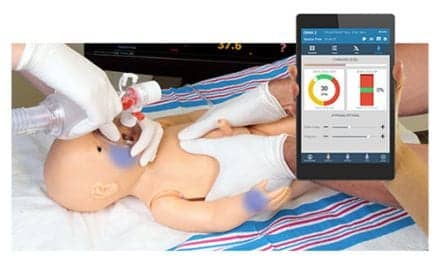Preauthorization of broad-spectrum antibiotics and prospective review after two or three days of treatment should form the cornerstone of antibiotic stewardship programs to ensure the right drug is prescribed at the right time for the right diagnosis. These are among the numerous recommendations included in new guidelines released by the Infectious Diseases Society of America (IDSA) and Society for Healthcare Epidemiology of America (SHEA) and published in the journal Clinical Infectious Diseases.
“Initially, antibiotic stewardship was more focused on cost savings, and physicians responded negatively to that, because they often felt it was best to give patients the newest, most expensive drug,” said Tamar Barlam, MD, lead co-author of the guidelines, director of the antibiotic stewardship program at Boston Medical Center and associate professor of medicine at Boston University Medical School. “While these programs do save hospitals money, their most important benefit is that they improve patient outcomes and reduce the emergence of antibiotic resistance. When we say stewardship, we really mean stewardship, and increasingly, doctors are realizing it’s important and necessary.”
The White House has called for hospitals and healthcare systems to implement antibiotic stewardship programs by 2020 to ensure appropriate use of these vital drugs and reduce resistance, an escalating problem that threatens the ability to effectively treat often life-threatening infections.
The new guidelines replace those originally created to help with the development of programs when antibiotic stewardship was in its infancy, and instead focus on specific strategies that the evidence suggests are most beneficial to ensure the program will be effective and sustainable. They also note it is key that these programs tailor interventions based on local issues, resources and expertise. To ensure that, the guidelines recommend the programs be led by physicians and pharmacists and rely on the expertise of infectious diseases specialists.
“We want hospital administrators to understand the importance of giving antibiotic stewardship their full support to ensure its success,” said Sara Cosgrove, MD, MS, lead co-author of the guidelines, president-elect of SHEA and associate professor of medicine and epidemiology at Johns Hopkins University, and director of the antimicrobial stewardship program and associate hospital epidemiologist at The Johns Hopkins Hospital, Baltimore. “Distributing a few brochures or holding grand rounds won’t do it. It’s vital that antibiotic stewardship be integrated into the hospital’s culture and that infectious disease specialists guide strategies that have been shown to work.”
The guidelines note that more research needs to be done to determine how to ensure antibiotic stewardship is most effective. However, the best evidence to date suggests a number of components, including the following, will help ensure the implementation of an effective antibiotic stewardship program.
- Preauthorization or prospective audit and feedback – Targeted antibiotics, such as those that treat emerging drug-resistant bacterial infections, should require preauthorization. This means providers need to get approval to use antibiotics before they are prescribed. Prospective audit and feedback can be an alternate strategy or combined with preauthorization. Prospective audit allows antibiotic stewards to engage the prescribing clinician after the antibiotic has been used, typically after two or three days, to optimize antibiotic treatments. Both methods can reduce antibiotic misuse and decrease the development of resistance. Hospitals should choose one or both of these methods as part of their program based on their local resources and expertise.
- Syndrome-specific interventions – The guidelines recommend focused multifaceted interventions for the treatment of specific syndromes, rather than trying to improve treatment of all infections at once. For example, Dr. Barlam said those leading a hospital’s antibiotic stewardship program might take a close look at management of pneumonia during winter, including making recommendations to shorten the amount of time people are treated and switching to an oral agent more quickly, and then measuring the results of those interventions. In the fall, the program might focus on urinary tract infections and then several months later, switch to skin and soft tissue infections. “This method makes stewardship more manageable and provides a targeted and clear treatment message rather than trying to disseminate 100 different lessons at the same time,” she said.
- Rapid diagnostic testing – The guidelines note that rapid diagnostic testing of respiratory specimens can help determine if the cause is viral and therefore reduce the inappropriate use of antibiotics. They also note that the rapid testing of blood cultures in addition to conventional culture is helpful, but should be guided by the antibiotic stewardship team for maximum benefit to the patient.
Other recommendations include reducing the use of antibiotics associated with Clostridium difficile infection, implementing antibiotic time-outs and other strategies to encourage prescribers to perform routine reviews of regimens and using computerized clinical decision support if possible.
The guidelines do not recommend relying solely on passive educational materials to implement antibiotic stewardship because any improvement likely will not be sustained. Lectures and brochures should be used to supplement strategies such as antibiotic preauthorization and prospective audit and feedback, the authors note.
In addition to Drs. Barlam and Cosgrove, the antibiotic stewardship program guidelines panel includes: Lilian Abbo, Conan MacDougall, Audrey N. Schuetz, Ed Septimus, Arjun Srinivasan, Timothy Dellit, Yngve T. Falck-Ytter, Neil Fishman, Cindy W. Hamilton, Timothy C. Jenkins, Pamela A. Lipsett, Preeti N. Malani, Larissa S. May, Gregory J. Moran, Melinda M. Neuhauser, Jason Newland, Christopher A. Ohl, Matthew Samore, Susan Seo and Kavita K. Trivedi.
IDSA and SHEA individually have published myriad treatment guidelines and together have published several, including the prevention of healthcare-associated infections and antimicrobial prophylaxis in surgery. As with other IDSA and SHEA guidelines, the antibiotic stewardship guidelines will be available in a smartphone format and a pocket-sized quick-reference edition. The full guidelines are available free on the IDSA website at www.idsociety.org and on the SHEA website at www.shea-online.org.










PneumoniaCheck is a device that allows for collection of an uncontaminated lower lung sample non-invasively simply by having the patient cough into the device. PCR – rapid diagnostic testing can be completed in less than 24 hours in most cases. See http://www.arcmedical.com/products/respiratory-icu/pneumoniacheck.php. Demo and In-services available nationwide.